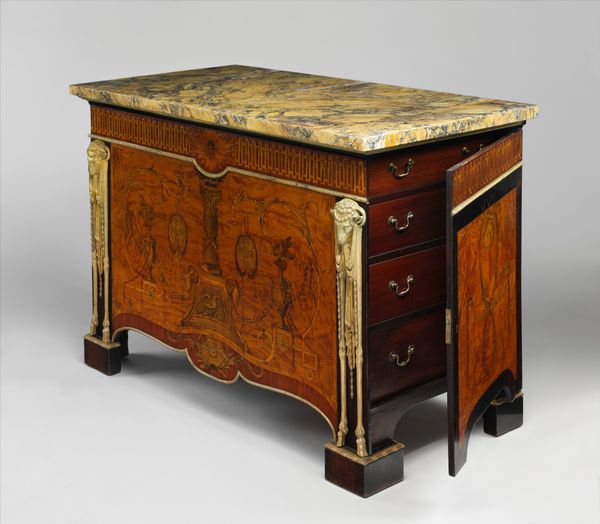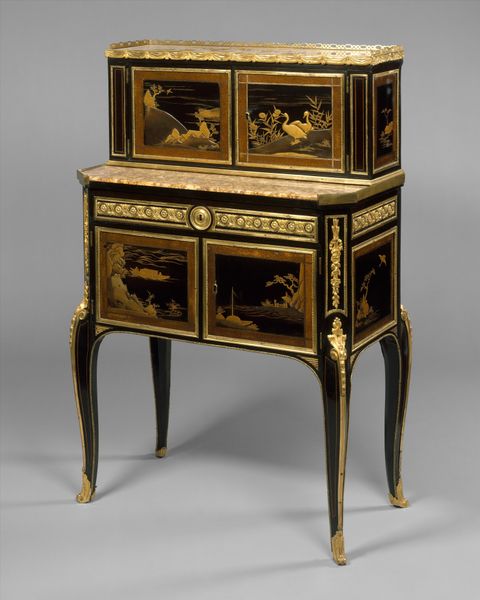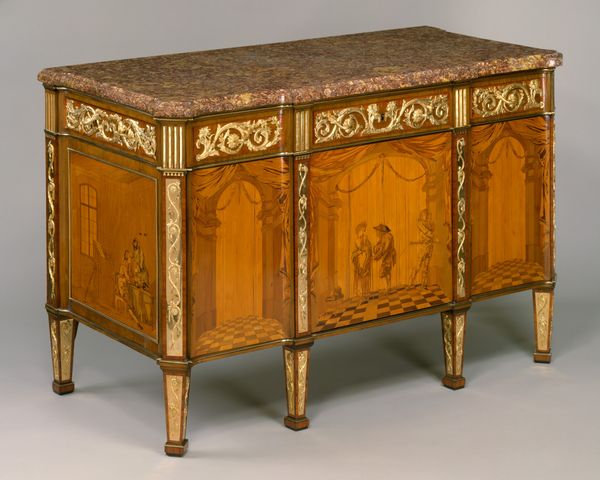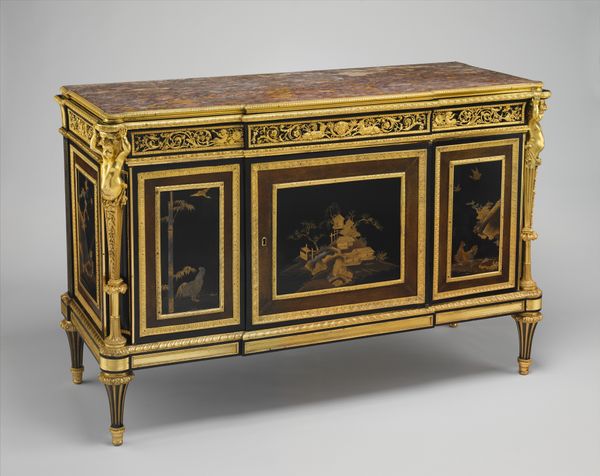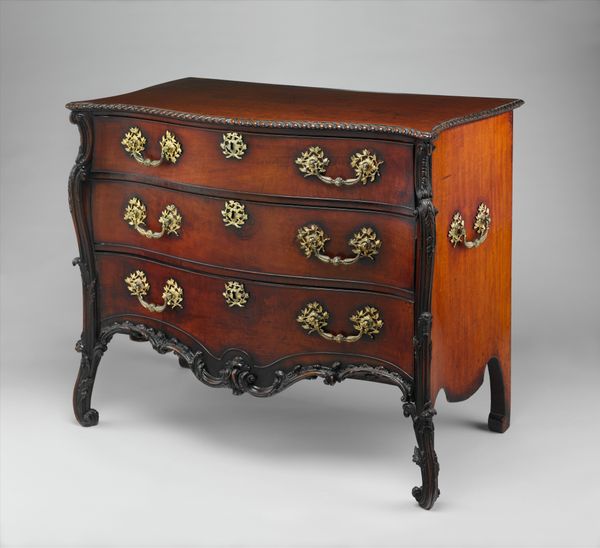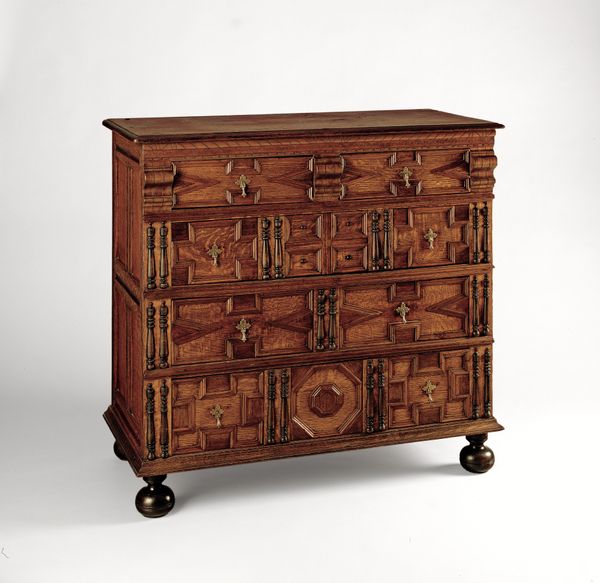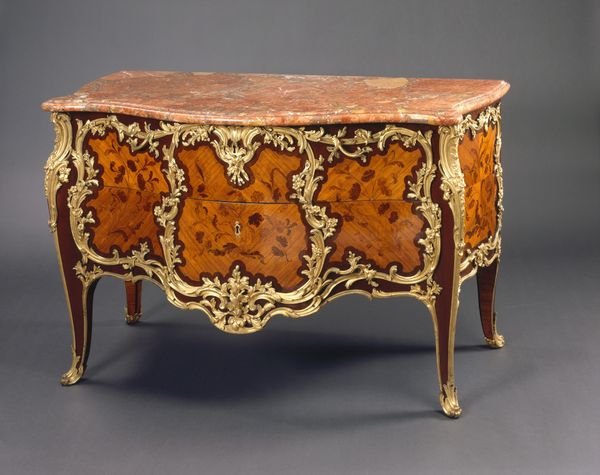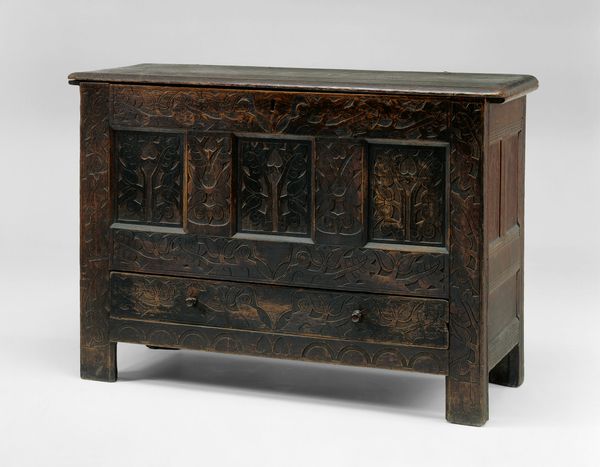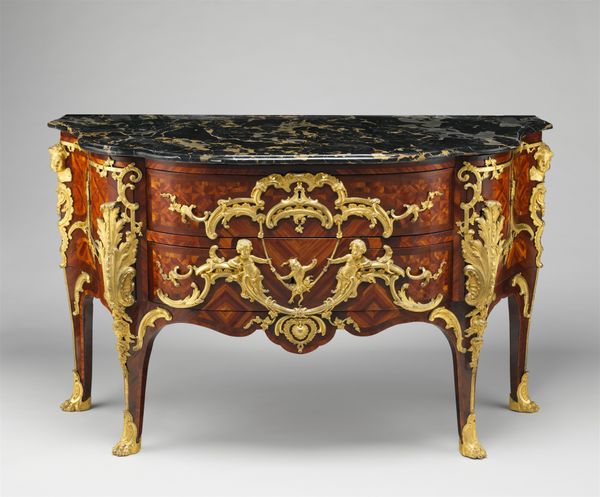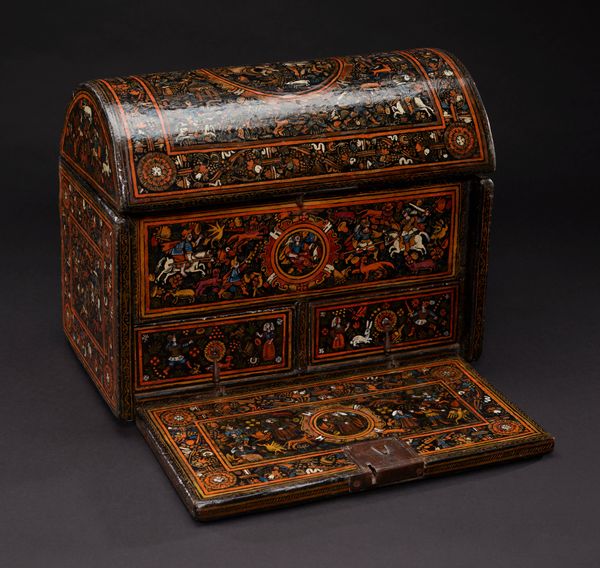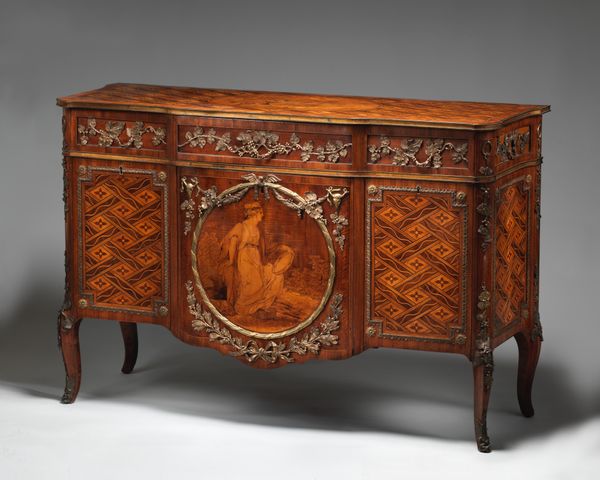
Small desk with folding top (bureau brisé) 1680 - 1690
0:00
0:00
sculpture, wood
#
baroque
#
furniture
#
sculpture
#
wood
#
decorative-art
Dimensions: 30 5/16 x 41 3/4 x 23 3/8 in. (77 x 106 x 59.4cm)
Copyright: Public Domain
Curator: Looking at this photograph, the immediate impression is one of opulent craftsmanship. Editor: And a rather busy surface, wouldn’t you say? Curator: Indeed! We are looking at what's known as a "Small desk with folding top", also named a "bureau brisé," dating from 1680 to 1690. It’s currently housed at the Metropolitan Museum of Art. This object provides insight into the world of baroque decorative art and how artisanal production intersected with courtly life. Editor: Ah, the age of exquisite ornamentation! What is it made of? Curator: Mostly wood. Looking at the form, the elaborate carvings and what appear to be metal fixtures really do stand out. Each aspect displays complex artisanal processes which can be traced through archival sources. Editor: You can certainly see that the artist didn't hold back! All that gilded detail; how was its function perceived then, I wonder? Surely it wasn’t simply utilitarian. Curator: Not at all. Its function extends beyond practicality, showcasing the social standing of the commissioner or owner. Pieces such as this acted as tangible manifestations of social class and aspiration in the Baroque era. Editor: So its material value underscores the historical dimensions—access and consumption of wealth were very much on display. But, getting back to the desk's surface, is that Japanning technique on the surface? Curator: Very astute! It showcases a distinct set of decorative approaches to furniture and aligns perfectly with the tastes of its time. This isn't just about making something; it's a display of wealth, power and influence mediated through crafted form. Editor: When observing period artworks, it’s important to situate this visually rich work in its specific place within art history. The Baroque was not monolithic and objects such as this reveal an important chapter. Curator: Precisely. Thinking about the museum space where it's displayed, that immediately influences how visitors interact with this piece today. The Met provides an important narrative about craftsmanship and luxury for the public. Editor: Right, making such craftsmanship and material available to a wide audience brings its history and techniques to life! Curator: It does, and thinking materially allows one to consider the object as not just an artistic accomplishment, but as material history, as labor materialized. Editor: What a great consideration as visitors go to explore and maybe rethink what a simple writing desk meant at that time.
Comments
No comments
Be the first to comment and join the conversation on the ultimate creative platform.
